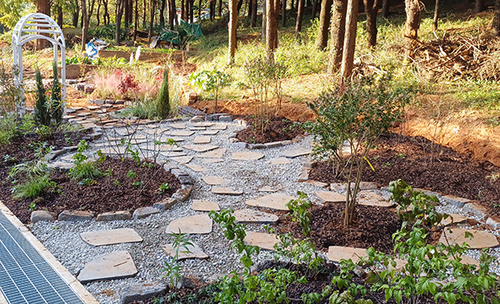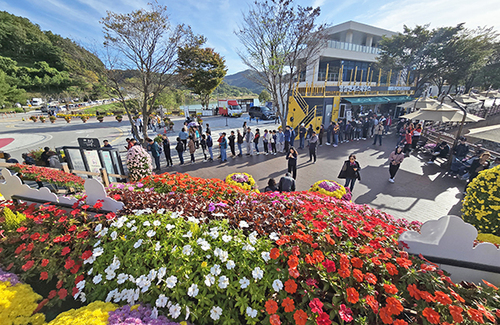| ▲ 24방위를 원으로 천문학ㆍ음양오행 사상 등 동양의 우주관을 그려 넣은 풍수 지남침(指南針)을 제작하는 윤도장(輪圖匠) 보유자로 김희수씨가 대를 이어 국가무형문화재로 인정됐다. / 사진제공 = 고창군청 © 김가영 기자 |
|
24방위를 원으로 천문학ㆍ음양오행 사상 등 동양의 우주관을 그려 넣은 풍수 지남침(指南針)을 제작하는 윤도장(輪圖匠) 보유자로 김희수씨가 대를 이어 국가무형문화재로 인정됐다.
전북 고창군은 최근 문화재청 무형문화재위원회가 국가무형문화재 '윤도장(輪圖匠)'보유자로김희수(金熙秀 = 성내면)씨를 인정해 부친인 김종대 선생에 이어 대를 잇게 됐다"고 8일 밝혔다.
김희수씨는 증조부 때부터 시작해 4대째 윤도 제작의 전통을 이어가고 있는 장인으로 부친에게 기법을 전수 받아 약 40여 년간 윤도 제작 기술을 연마했고 2007년 전승교육사로 인정됐다.
이번 보유자 인정조사는 공정별 재료ㆍ도구 사용이 전통성을 갖고 있으며 평철(平鐵)과 부채의 자루 끝에 달아 늘어뜨리는 선추(扇錘)의 제작 기술이 숙련되고 완성도를 갖추고 있다는 평가를 받았다.
특히 딱딱한 대추나무에 음각(陰刻 = 오목새김)으로 글자를 새기는 각자(刻字)작업과 강철을 깎아 자침을 만든 후 윤도에 얹는 작업이 매우 섬세하고 정확했다.
또 고창군과 문화재청 등 각종 기관에서 주최하는 무형문화재 시연 및 교육과 체험ㆍ전시 사업에도 적극적으로 참여하는 등 전통 문화유산인 윤도(輪圖)를 홍보하고 전승하려는 의지가 뛰어나다는 평가다.
이전 보유자인 부친 김종대씨는 그동안 윤도장의 전승을 위해 헌신했으나 건강상의 이유로 전수교육 및 전승활동이 어려워 명예보유자로 인정 예고됐다.
유기상 고창군수는 "어렵고 힘든 여건에도 불구하고 묵묵히 가업을 계승하며 소중한 문화유산을 지키고 있는 김종대ㆍ김희수 선생에게 존경을 표한다"며 "앞으로도 한반도 첫 수도 고창의 전통문화와 무형문화유산을 적극 발굴하고 지원하겠다"고 말했다.
한편, 윤도(輪圖)는 중앙의 자침을 중심으로 동심원의 숫자에 따라 1층부터 많게는 36층까지 다양한 크기가 있다.
각 층에는 음양ㆍ오행ㆍ팔괘 등이 조합을 이루며 배치되고 특별한 장식 없이 7~9층 정도로 구성된 평철(平鐵)이 가장 보편적으로 많이 사용되는 형태다.
국가무형문화재 '윤도장(輪圖匠)'은 풍수가ㆍ천문학자ㆍ여행가ㆍ어부ㆍ지관(地官) 등의 필수품으로 ▲ 패철(佩鐵) ▲ 지남철(指南鐵) ▲ 나경(羅經)이라고 불리는 전통 나침반인 윤도(輪圖)를 만드는 기술을 보유한 장인(匠人)을 말한다.
☞ 아래는 위 기사를 구글 번역이 번역한 영문 기사의 '전문' 입니다.
구글 번역은 이해도를 높이기 위해 노력하고 있으며 영문 번역에 오류가 있음을 전제로 합니다.
【Below is the 'full text' of the English article translated by Google Translate.
Google Translate is working hard to improve understanding, and assumes that there are errors in the English translation.】
Kim Hee-soo's 'Yundojang, National Intangible Cultural Heritage' recognized
Passed down from father, the only traditional technique for making yundo(輪圖) in Korea
Reporter Kim Ga-young
Kim Hee-soo has been recognized as a national intangible cultural asset for generations as the holder of the Yundojang(輪圖匠), which produces feng shui chimney needles with the 24 directions as a circle and depicting oriental cosmic views such as astronomy and the yin and yang and five elements.
In Gochang-gun, Jeollabuk-do, the Cultural Heritage Administration's Intangible Cultural Heritage Committee recently recognized Kim Hee-soo(金熙秀 = Seongnae-myeon) as the holder of the national intangible cultural heritage, 'Yundojang(輪圖匠)', and succeeded in succeeding his father, Kim Jong-dae.”
Kim Hee-soo is a craftsman who continues the tradition of making swords for the fourth generation, starting from the time of his great-grandfather.
According to the owner certification survey, the use of materials and tools for each process has a tradition, and the production technology of flat iron and a pendulum hanging from the tip of a fan was evaluated as being skilled and complete.
In particular, the work of engraving characters on the hard jujube with intaglio (陰刻 = concave engraving) and the work of cutting steel to make a needle and then putting it on the yundo were very delicate and accurate.
In addition, it is evaluated that the will to promote and transmit Yundo, a traditional cultural heritage, is outstanding by actively participating in demonstrations, education, experience, and exhibition projects of intangible cultural properties hosted by various institutions such as Gochang-gun and the Cultural Heritage Administration.
His father, Jong-dae Kim, who was the previous owner, devoted himself to the succession of Dojang Yoon, but was predicted to be recognized as an honorary holder due to difficulties in handing down education and transmission activities due to health reasons.
Gochang mayor Yu Ki-sang said, "I pay my respects to Kim Jong-dae and Kim Hee-soo, who silently inherit the family business and protect their precious cultural heritage despite difficult and difficult circumstances." I will support you," he said.
On the other hand, Yundo(輪圖) has various sizes from the 1st floor to the 36th floor according to the number of concentric circles centered on the central magnetic needle.
On each floor, yin and yang, the five elements, and the eight elements are arranged in a combination, and flat-cheol(平鐵), which consists of 7 to 9 floors without special decoration, is the most commonly used form.
The national intangible cultural asset 'Yundojang(輪圖匠)' is a necessities for feng shui, astronomers, travelers, fishermen, and jigwan. It refers to a craftsman who has the skill to make a traditional compass called Yundo(輪圖).





















 많이 본 뉴스
많이 본 뉴스











